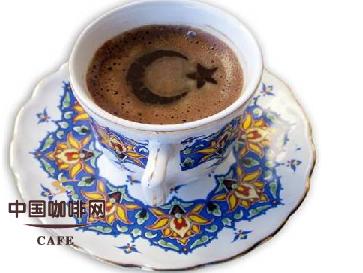Arabica Coffee how to make Turkish Coffee

There is a Turkish proverb that says,"Drink your cup of Turkish coffee and remember your friendship for forty years." A cup of Turkish coffee with cloves, cardamom and cinnamon fills the room when hot. No wonder Arabs praise it as "musky and soul-stirring."
Turkish coffee, also known as Arabic coffee, is the ancestor of European coffee and has been born for seven or eight hundred years. The reason why Turkish coffee must be mentioned when talking about coffee is that coffee originated from both Muslim and Christian standpoints, and its hometown is in the remote and mysterious mountains of the Middle East. Coffee was born in Turkey in the 16th century, began to be commercialized, and quickly spread to the European continent. Turkish coffee is still popular in Greece, Eastern Europe, the Middle East, North Africa and other places, and still maintains the mystery of early religious ceremonies. It is said that in Turkey, cooking a cup of traditional Turkish coffee for guests is a very noble thing, and some even have to bathe and fast in advance.
In Turkey, inviting someone over for coffee represents the most sincere respect of the host. Therefore, in addition to praising the aroma of coffee, guests should also remember that even if they drink a mouthful of slag, they cannot drink water, because it implies that coffee is not good to drink. The Turks drink coffee slowly, and they even have an elaborate "coffee ceremony", just like the Chinese tea ceremony. When drinking coffee, you not only have to burn incense, but also sprinkle spices, smell incense, a wide variety of coffee pots, but also full of Arabian Nights style style. A cup of Turkish coffee with cloves, cardamom and cinnamon fills the room when hot. No wonder Arabs praise it as "musky and soul-stirring."
Turkish coffee is a kind of coffee brewed in the original method. Many Turks, especially women, like to use the coffee residue marks left by Turkish coffee to predict the fortune of the day. The Turks say coffee is the black enemy of sleep and love, in other words, sleep and love can be sacrificed for coffee.
Turkish coffee drinking method is the most primitive, and the locals drink Turkish coffee is unsweetened. The first feeling after drinking it was thick and syrupy. The second is suffering, which can be remembered for a long time. Halfway through, you'll feel the dregs, but don't stop. It's really Turkish coffee when you drink them together. The feeling of drinking the dregs is unforgettable, neither bitter nor astringent, there is an indescribable experience, must be tasted by themselves before they can fully understand.
There is also an interesting local custom where if a man finishes his coffee and returns the empty cup to the tray in the girl's hand, he indicates that he wants to marry her. British Crown Prince Charles had a whirlwind visit to Mardin in eastern Turkey, and the host arranged colorful visits. During the break, a beautiful young local woman served Charles traditional coffee. Charles had scarcely taken a sip when he heard Governor Martin remind him of the custom of the place. At this point, Charles handed the half-empty cup back to the woman and said,"You were so close to becoming a princess of England."
How to Make Turkish Coffee
Deep roast coffee beans, ground to a fine powder. Turkish coffee required fineness is the most of all kinds of bubble method, requires very fine grinding, intuitive standard is to be finer than flour. Then mix the cloves, cardamom, cinnamon and other spices. Then put 100 ml of cold water in the Turkish coffee pot. Then add about 10 grams of coffee powder. 100 ml water +10 g powder is the golden ratio of a cup of coffee.
When the ingredients are added, heat them and stir constantly. Stirring should be gentle and slow to avoid stirring the powder layer of the liquid surface (avoid breaking the residue) and avoid excessive extraction. Just before boiling, a layer of golden foam appeared on the surface. The foam gradually increased and quickly surged up. Immediately remove the pot from the fire. After the foam fell, put it back on the fire. After several boils, the coffee gradually thickened, but it was not finished until it was boiled to half the original. When the coffee grounds settle to the bottom, pour out the upper clarified coffee solution. Sometimes lemon or honey can be added. A cup of delicious Turkish coffee is ready.
Important Notice :
前街咖啡 FrontStreet Coffee has moved to new addredd:
FrontStreet Coffee Address: 315,Donghua East Road,GuangZhou
Tel:020 38364473
- Prev

Espresso recommends several fancy coffees
1, Irish coffee Irish Coffee (Ireland) slightly deep-baked coffee 150cc Irish Whiskey 20cc white granulated sugar 10g stir cream or whipped cream 20cc ironing the cup, wipe the cup clean, put in the white granulated sugar, Irish Whiskey, pour into the coffee, and then gently float the cream on top (do not stir with a teaspoon when using whipped cream).
- Next

Common sense of drinking coffee matters needing attention when drinking coffee
Tasting coffee a cup of coffee in front of you, do not rush to drink, should be like tasting tea and wine, there should be a gradual process, first pleasing to the eye, and then smell the aroma, and then begin to enjoy, in order to achieve the purpose of relaxation, refreshing and enjoyment. Coffee cups are usually served in pocket cups. The ears of this cup are too small for fingers to pass through, but even large cups
Related
- Beginners will see the "Coffee pull flower" guide!
- What is the difference between ice blog purified milk and ordinary milk coffee?
- Why is the Philippines the largest producer of crops in Liberia?
- For coffee extraction, should the fine powder be retained?
- How does extracted espresso fill pressed powder? How much strength does it take to press the powder?
- How to make jasmine cold extract coffee? Is the jasmine + latte good?
- Will this little toy really make the coffee taste better? How does Lily Drip affect coffee extraction?
- Will the action of slapping the filter cup also affect coffee extraction?
- What's the difference between powder-to-water ratio and powder-to-liquid ratio?
- What is the Ethiopian local species? What does it have to do with Heirloom native species?

